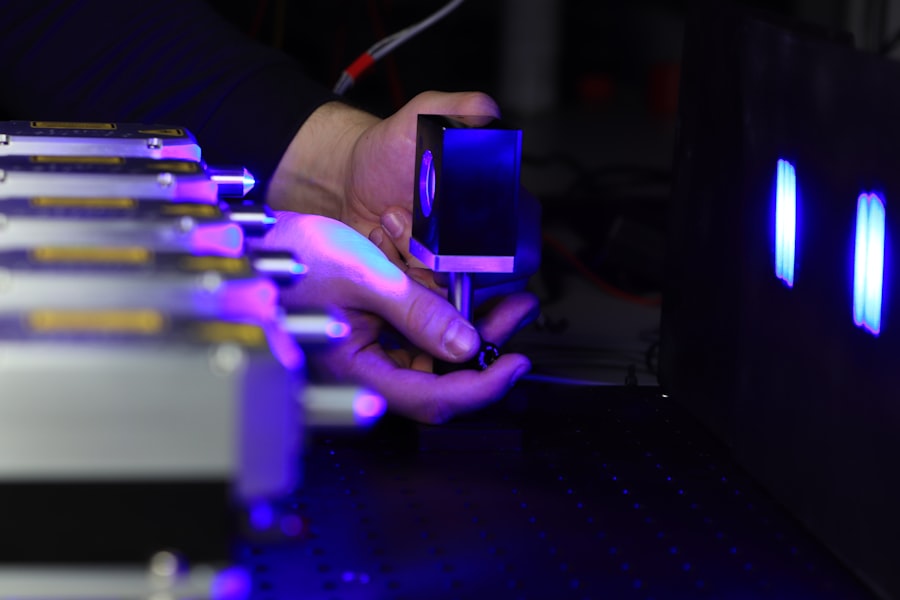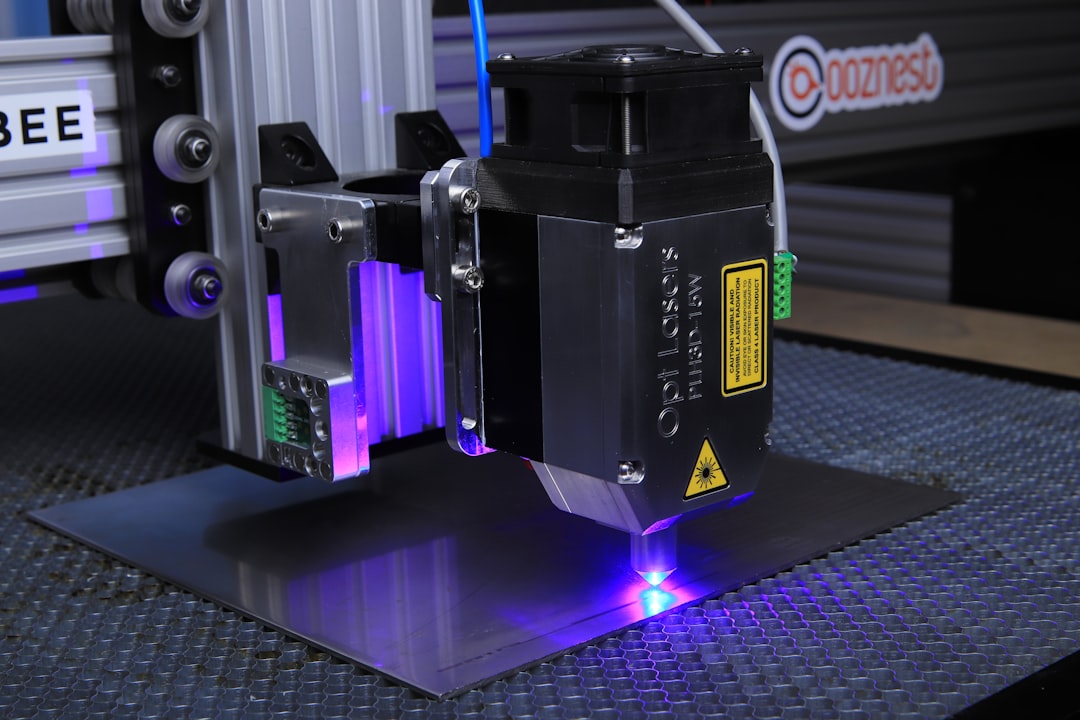Laser hair removal is a popular cosmetic procedure that uses concentrated beams of light to remove unwanted hair. The process involves targeting the hair follicles with the laser, which damages them and inhibits future hair growth. This procedure is commonly used to remove hair from the face, legs, arms, underarms, and bikini line. The laser used in this process is attracted to the pigment in the hair, making it most effective on individuals with dark hair and light skin. However, advancements in technology have made it possible for people with different skin and hair colors to undergo laser hair removal.
Laser hair removal is a non-invasive procedure that is performed by trained professionals in medical spas or dermatology clinics. The process typically requires multiple sessions to achieve the desired results, as hair grows in different cycles and the laser is most effective on hair in the active growth phase. It is important for individuals considering laser hair removal to consult with a qualified practitioner to determine if they are a suitable candidate for the procedure and to discuss their expectations and any potential risks.
Key Takeaways
- Laser hair removal uses concentrated light to target and destroy hair follicles, leading to long-term hair reduction.
- The effectiveness of laser hair removal varies depending on factors such as hair color, skin type, and treatment area.
- Laser hair removal is generally considered safe when performed by a qualified professional, but there are potential risks such as skin irritation and pigment changes.
- Factors affecting the permanence of laser hair removal include hormonal changes, genetics, and the number of treatment sessions.
- Potential risks and side effects of laser hair removal include temporary discomfort, redness, and swelling, as well as rare complications such as burns and scarring.
- Long-term maintenance after laser hair removal may involve occasional touch-up sessions to target any regrowth.
- Laser hair removal is not always permanent, but it can provide long-term hair reduction and is generally safe when performed by a qualified professional.
The Effectiveness of Laser Hair Removal
Laser hair removal is known for its effectiveness in reducing and removing unwanted hair. The procedure targets the hair follicles, damaging them and inhibiting future hair growth. While it is considered a permanent hair reduction method, it is important to note that some hair may regrow over time, albeit finer and lighter in color. The effectiveness of laser hair removal can vary depending on factors such as skin and hair color, the area being treated, and the individual’s hormonal levels.
The success of laser hair removal also depends on the skill and experience of the practitioner performing the procedure. It is essential to seek treatment from a qualified and reputable professional to ensure the best results. Additionally, following the recommended treatment schedule and adhering to aftercare instructions can contribute to the overall effectiveness of laser hair removal. Overall, laser hair removal has been proven to be a highly effective method for reducing unwanted hair, providing long-lasting results for many individuals.
The Safety of Laser Hair Removal
Laser hair removal is generally considered a safe procedure when performed by a trained professional using FDA-approved equipment. However, as with any cosmetic treatment, there are potential risks and side effects that individuals should be aware of before undergoing the procedure. Common side effects of laser hair removal may include redness, swelling, and mild discomfort in the treated area, which typically subside within a few days.
It is important for individuals considering laser hair removal to disclose any medical conditions, medications, or skin sensitivities to their practitioner before undergoing treatment. This information will help the practitioner determine the most suitable approach and minimize any potential risks. Additionally, individuals should follow pre- and post-treatment guidelines provided by their practitioner to ensure the safety and effectiveness of the procedure. Overall, when performed by a qualified professional and with proper precautions, laser hair removal is considered a safe and effective method for reducing unwanted hair.
Factors Affecting the Permanence of Laser Hair Removal
| Factors | Description |
|---|---|
| Skin Color | Darker skin tones may require special lasers to avoid pigmentation changes. |
| Hair Color | Darker hair responds better to laser treatment than lighter hair. |
| Hormones | Hormonal changes can affect hair growth and may require additional sessions. |
| Sun Exposure | Exposure to sun can make the skin more sensitive and affect the effectiveness of the treatment. |
| Treatment Area | Different areas of the body may require different treatment approaches. |
Several factors can affect the permanence of laser hair removal. Skin and hair color play a significant role in determining the success of the procedure, as the laser targets the pigment in the hair follicles. Individuals with darker hair and lighter skin typically experience better results, as the contrast between the hair and skin makes it easier for the laser to target the follicles. However, advancements in technology have made it possible for individuals with different skin and hair colors to undergo laser hair removal.
Hormonal changes can also impact the permanence of laser hair removal. Fluctuations in hormone levels, such as those experienced during pregnancy or menopause, can stimulate new hair growth, potentially requiring touch-up sessions to maintain results. Additionally, individual responses to treatment can vary, with some people experiencing more significant reduction in hair growth than others. It is important for individuals considering laser hair removal to have realistic expectations and understand that maintenance sessions may be necessary to achieve long-term results.
Potential Risks and Side Effects of Laser Hair Removal
While laser hair removal is generally considered safe, there are potential risks and side effects that individuals should be aware of before undergoing treatment. Common side effects may include redness, swelling, and mild discomfort in the treated area, which typically subside within a few days. In rare cases, more serious side effects such as burns, blistering, or changes in skin pigmentation may occur.
It is important for individuals to choose a qualified and experienced practitioner who uses FDA-approved equipment to minimize the risk of adverse effects. Additionally, individuals should follow pre- and post-treatment guidelines provided by their practitioner to reduce the likelihood of complications. By understanding the potential risks and side effects associated with laser hair removal and taking necessary precautions, individuals can undergo treatment with confidence.
Long-Term Maintenance after Laser Hair Removal

While laser hair removal is known for its long-lasting results, some individuals may require maintenance sessions to sustain the effects of the treatment. Factors such as hormonal changes, aging, and individual responses to treatment can impact the permanence of laser hair removal. Touch-up sessions may be necessary to target any new hair growth that occurs over time.
Following the initial treatment plan and adhering to aftercare instructions provided by the practitioner can contribute to the long-term success of laser hair removal. It is important for individuals to communicate with their practitioner about any changes in their hair growth or skin condition to determine if additional sessions are needed. By staying proactive and maintaining open communication with their practitioner, individuals can ensure that they achieve and sustain optimal results from laser hair removal.
Is Laser Hair Removal Permanent and Safe?
In conclusion, laser hair removal is a highly effective method for reducing unwanted hair on various areas of the body. While it is considered a permanent reduction method, some individuals may experience regrowth over time, particularly due to hormonal changes or individual responses to treatment. The safety of laser hair removal largely depends on the qualifications and experience of the practitioner performing the procedure, as well as the adherence to pre- and post-treatment guidelines.
Overall, when performed by a trained professional using FDA-approved equipment, laser hair removal is considered safe and can provide long-lasting results for many individuals. By understanding the factors that can affect the permanence of laser hair removal and being aware of potential risks and side effects, individuals can make informed decisions about undergoing this popular cosmetic procedure. With proper care and maintenance, laser hair removal can offer a safe and effective solution for reducing unwanted hair and achieving smooth, long-lasting results.
If you’re considering laser hair removal, you may have questions about its safety and effectiveness. A related article on inlaserhairremoval.com discusses the safety of laser hair removal near your eyes, providing valuable insights into this specific area of treatment. Understanding the safety aspects of laser hair removal is crucial, and this article can help address any concerns you may have.
FAQs
What is laser hair removal?
Laser hair removal is a cosmetic procedure that uses a concentrated beam of light (laser) to remove unwanted hair. The light is absorbed by the pigment in the hair follicles, which damages the follicle and inhibits future hair growth.
Is laser hair removal permanent?
Laser hair removal can lead to long-term hair reduction, but it is not always permanent. Some people may experience regrowth of hair after treatment. Multiple sessions are usually required to achieve the best results, and maintenance treatments may be needed over time.
Is laser hair removal safe?
When performed by a qualified and experienced professional, laser hair removal is generally considered safe. However, there are potential risks and side effects, including skin irritation, changes in skin pigmentation, and rare cases of burns or scarring. It is important to follow pre- and post-treatment care instructions to minimize the risk of complications.






